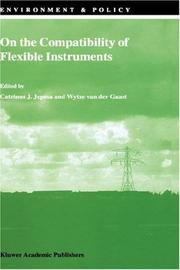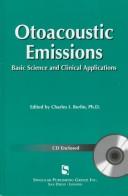| Listing 1 - 10 of 1929 | << page >> |
Sort by
|
Book
ISBN: 1786439409 9781786439406 Year: 2017 Publisher: Cheltenham: Elgar,
Abstract | Keywords | Export | Availability | Bookmark
 Loading...
Loading...Choose an application
- Reference Manager
- EndNote
- RefWorks (Direct export to RefWorks)
"[This book] analyzes the practice of freely allocating permits in emissions trading schemes (ETSs) and demonstrates how many heavy polluters participating in ETSs are not yet paying the full price of carbon. This...book provides a framework to assist policymakers in the design of transitional assistance measures that are both legally robust and will support the effectiveness of the ETSs whilst limiting negative impacts on international trade. Within the realm of international and comparative law, this book closes the gap between the legal frameworks of ETSs in practice, the economic research data and the doctrinal analysis of WTO law. These interesting insights and fresh ideas explore the connection between ETSs, the problems with free allocation of emission permits and the analysis of complex legal instruments."--
Book
ISBN: 3748927800 Year: 2021 Publisher: Baden-Baden, Germany : Nomos,
Abstract | Keywords | Export | Availability | Bookmark
 Loading...
Loading...Choose an application
- Reference Manager
- EndNote
- RefWorks (Direct export to RefWorks)
Book
Abstract | Keywords | Export | Availability | Bookmark
 Loading...
Loading...Choose an application
- Reference Manager
- EndNote
- RefWorks (Direct export to RefWorks)
Television --- Emissions --- Television --- Emissions

ISBN: 0792357280 Year: 1999 Publisher: Dordrecht : Kluwer academic,
Abstract | Keywords | Export | Availability | Bookmark
 Loading...
Loading...Choose an application
- Reference Manager
- EndNote
- RefWorks (Direct export to RefWorks)
Book
Year: 2013 Publisher: [Place of publication not identified] : Nordic Innovation,
Abstract | Keywords | Export | Availability | Bookmark
 Loading...
Loading...Choose an application
- Reference Manager
- EndNote
- RefWorks (Direct export to RefWorks)
Book
Year: 2022 Publisher: Washington, D.C. : International Monetary Fund,
Abstract | Keywords | Export | Availability | Bookmark
 Loading...
Loading...Choose an application
- Reference Manager
- EndNote
- RefWorks (Direct export to RefWorks)
Carbon pricing should be a central element of climate mitigation strategies, helping countries transition to 'net zero' greenhouse gas emissions over the next three decades. Policymakers considering introducing or scaling up carbon pricing face technical choices between carbon taxes and emissions trading systems (ETSs) and in their design. This includes administration, price levels, relation to other mitigation instruments, use of revenues to address efficiency and distributional objectives, supporting measures to address competitiveness concerns, extension to broader emissions sources, and coordination at the global level. Political economy considerations also affect the choice and design of instruments. This paper discusses such issues in the choice between and design of carbon taxes and ETSs, providing guidance, broader considerations, and quantitative analyses. Overall, carbon taxes have significant practical advantages over ETSs (especially for developing countries) due to ease of administration, price certainty to promote investment, the potential to raise significant revenues, and coverage of broader emissions sources-but ETSs can have significant political economy advantages.
Book
Year: 2007 Volume: 2007:611 Publisher: Copenhagen : Nordic Council of Ministers,
Abstract | Keywords | Export | Availability | Bookmark
 Loading...
Loading...Choose an application
- Reference Manager
- EndNote
- RefWorks (Direct export to RefWorks)
Book
Year: 2021 Publisher: Washington, D.C. : International Monetary Fund,
Abstract | Keywords | Export | Availability | Bookmark
 Loading...
Loading...Choose an application
- Reference Manager
- EndNote
- RefWorks (Direct export to RefWorks)

ISBN: 1565939751 Year: 1998 Publisher: San Diego (Calif.): Singular publ. group
Abstract | Keywords | Export | Availability | Bookmark
 Loading...
Loading...Choose an application
- Reference Manager
- EndNote
- RefWorks (Direct export to RefWorks)
Book
Year: 2021 Publisher: Washington, District of Columbia : The World Bank,
Abstract | Keywords | Export | Availability | Bookmark
 Loading...
Loading...Choose an application
- Reference Manager
- EndNote
- RefWorks (Direct export to RefWorks)
Important mitigation outcomes and other co-benefits could be at reach if rural communities and policy makers in low- and middle-income economies overcame the obstacle of access to finance in the livestock sector. The traditional sources of financing have long been difficult to access for livestock smallholders who often do not hold collateral except for their animals and have little experience of working with financial institutions. Traditional lenders see the livestock sector as overly risky, with little potential for significant profits, leaving them largely uninterested. Expanding financial inclusion would improve livelihoods, increase resilience, and help reduce GHG emissions. Innovative approaches to financing for the livestock sector are needed. In a sector that plays an essential economic role for some 60% of rural households, including 1.7 billion people and contributes up to half of agricultural GDP, reducing carbon emissions while maintaining livelihoods and reducing poverty is essential. This report identifies investment opportunities for increasing climate finance in the sector and drive its sustainable transformation.
| Listing 1 - 10 of 1929 | << page >> |
Sort by
|

 Search
Search Feedback
Feedback About UniCat
About UniCat  Help
Help News
News